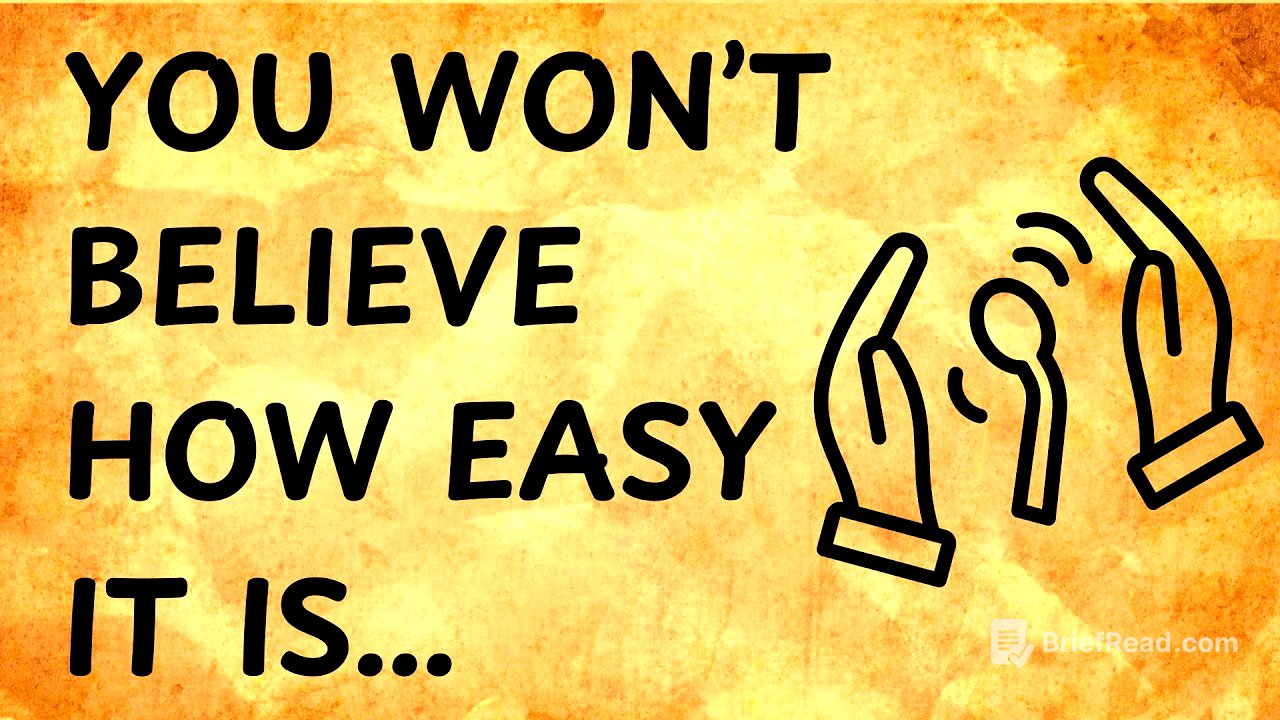TLDR;
This video provides a beginner's guide to telekinesis, breaking down the process into four simple steps. It emphasizes the importance of mindset, environment, and proper tools, while also addressing common challenges and offering practical tips for improvement. The key takeaways include:
- Telekinesis is a skill that requires practice, patience, and belief.
- Creating the right environment and using the appropriate tools are crucial for success.
- Focusing intention, using the mind-stopping breath technique, and refining the connection between mind and object are essential steps.
- Overcoming doubt, distractions, and impatience are common challenges that can be addressed with consistent practice and a positive mindset.
Introduction [0:00]
The video introduces the concept of telekinesis, the ability to move objects with one's mind, and challenges the notion that it is purely science fiction. It references research and experiments that suggest focused intention can influence random systems, citing Dean Roden's studies and Shan mn's book "Defy Your Limits." The video asserts that telekinesis is a skill accessible to anyone willing to train their mind, emphasizing the importance of practice, belief, and understanding the power of the mind. The video promises to guide viewers through four simple steps to unlock this hidden potential.
Preparation [1:05]
Before attempting telekinesis, it's crucial to prepare the right mindset, environment, and tools. First, adopt a confident mindset by letting go of doubt, as energy follows attention. Focus solely on the object, avoiding attention to your body. Second, create a distraction-free environment, silencing phones and ensuring no wind interference. Third, gather the necessary tools: a sewing needle stuck in a stable base, a small tin foil tent balanced on the needle, and optionally, a static-free glass container for advanced levels. Finally, prioritize self-care by staying well-rested and avoiding practice when tired or hungry, as a calm body aids focus.
The 4 Easy Steps [3:04]
The video outlines four steps to practice telekinesis. Step one involves building focus by sitting comfortably, positioning hands near the object without touching it, and gazing softly at the object, taking in its details. Step two focuses on setting intention by imagining a wall and the impulse to touch it, then applying that silent intention to the object without using forceful words. Step three introduces the mind-stopping breath technique, which involves deep inhales, holding breath, and slow exhales to relax the body and quiet the mind, extending this relaxation toward the object. Step four encourages refining and expanding the practice by increasing the distance between hands and the object, observing changes, and using a glass container to block air currents, deepening the connection between mind and object.
Troubleshooting And Tips [6:30]
The video addresses common challenges in telekinesis practice. The first challenge is when nothing seems to happen, which is normal for beginners; patience and consistency are key, and even small wobbles indicate progress. The second challenge involves doubt and distractions, which can be countered by refocusing on the object and using the breathing technique. The third challenge is questioning if movement is just the wind, which can be addressed by using a glass container. The fourth challenge is impatience, which can be managed by taking breaks and approaching sessions with curiosity. The video concludes with tips to accelerate progress, such as keeping sessions short (20-30 minutes), celebrating small wins, tracking progress in a journal, and practicing consistently, even for short periods.









